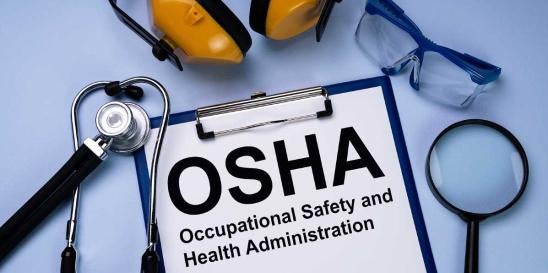As Israeli companies continue to expand globally and acquire operations in the United States, a proactive approach to safety and health in the workplace is critical. The U.S. Occupational Safety and Health Act (OSH Act), which regulates the safety and health of workplace conditions in the United States, and the agency charged with its enforcement, the Occupational Safety and Health Administration (OSHA), have significantly broader reach than Israel’s Work Safety Ordinance (New Version). In addition to regulating workplaces within the maritime and agricultural industries, OSHA regulates workplace conditions at both construction and non-construction facilities. The OSH Act has jurisdiction over nearly every type of industry in which global Israeli companies typically operate, including industrial, environmental, retail, and manufacturing. Further, OSHA’s regulations cover a myriad of non-construction workplace hazards, including training, emergency planning, environmental control, ventilation, respiration, noise and heat exposure, hazardous and toxic chemicals, hazardous waste, personal protective equipment, the control of hazardous energy, materials handling, machine guarding, electrical hazards, and more. Moreover, in recent months, OSHA has expanded and updated its regulatory framework, resulting in increased penalty amounts, new and extensive injury reporting and recording requirements, and increased scrutiny of individual corporate agents and potential criminal referrals.
Many workplace accidents are preventable if a company exhibits a commitment to workplace safety, conducts proper and thorough workplace hazard analyses, and takes reasonable steps to address and remedy issues where technologically and financially feasible. When ignored, workplace hazards may cost a company far more. Accordingly, companies should consider involving experienced OSHA counsel to prevent issues in the first place, and throughout the investigation process.
If a workplace incident occurs at a U.S. worksite, the company should identify whether the incident must be recorded and/or reported to OSHA. The OSH Act’s reporting and recording requirements are far more extensive than Israel’s Accidents and Occupational Diseases (Notification) Ordinance (1945). Specifically, OSHA regulations require a company to report any worker fatality to OSHA within eight hours, and any amputation, loss of an eye, or hospitalization of a worker within 24 hours.
In addition, in the United States, a company is required to record injury and illness information on a yearly log (300 Log) and, as of Jan. 1, 2024, certain companies are required to electronically submit detailed information to OSHA from their 300 Logs by March 2 of each calendar year. These new regulations require a company with 100 or more employees in designated high-hazard industries, including a wide variety of production and manufacturing facilities, as well as retail sales establishments, to electronically submit detailed information about each recordable injury, including the date, physical location, and severity of the injury or illness, details about the worker who was injured, and details about how the injury or illness occurred. OSHA defines a “recordable” injury primarily as “any work-related fatality, any work-related injury or illness that results in loss of consciousness, days away from work, restricted work, or transfer to another job, and any work-related injury or illness requiring medical treatment beyond first aid.” Recording a serious work-related injury on the 300 Log does not satisfy OSHA’s requirement to timely report a serious work-related injury. A company should be careful not to confuse their recording and reporting requirements, as either failure could result in the issuance of a citation. See our January 2024 GT Alert for more information.
Under the OSH Act, an inspector may conduct an inspection of a worksite following a report of a workplace injury or fatality or following an employee complaint concerning exposure to safety or health hazards. In addition, even without an incident or complaint, an inspector may conduct an inspection of a worksite pursuant to a National or Regional Emphasis Program that authorizes inspections of certain worksites with traditionally high injury rates, such as certain retail establishments, manufacturing facilities, refineries and chemical facilities, oil and gas sites, and warehouses and distribution centers. When an OSHA inspection occurs, the OSH Act authorizes an inspector to come to a company’s worksite to conduct a walkthrough, request documents from the company, and interview employees. The company is typically permitted to participate in OSHA’s interviews of supervisory personnel, but the OSHA investigator is authorized to interview non-supervisory employees privately, outside the presence of the company attorney. If an OSHA inspector presents their credentials at a worksite and seeks to enter and conduct an inspection, the company representative should contact the company attorney immediately to discuss the scope and purpose of the inspection, including the extent of any requests for the production of documents and/or interviews.
Following a worksite inspection, OSHA generally has six months to issue any citations to the company. If a citation is issued, the company must file a written Notice of Intent to Contest the citation with the local OSHA office within 15 working days of receiving such citation. Once a citation is properly and timely contested, a company will be offered the opportunity to conduct an Informal Conference with the local OSHA office, at which the company’s attorney can attempt to resolve OSHA’s findings without having to litigate. Company management should keep in mind that verbal or email communications with the local OSHA office about scheduling an Informal Conference and/or resolving a citation do not qualify as a formal Notice of Intent to Contest. Matters not resolved at an Informal Conference will be referred to the Occupational Safety and Health Review Commission for adjudication. If a citation is not timely contested, or if a citation is voluntarily accepted, and a subsequent citation is received involving a substantially similar hazard, the new citation could be issued as a Willful or Repeat violation, with significantly higher penalties, potentially leading to drastic financial implications for a business and/or worksite.
The OSH Act’s current penalty structure can expose a company to far more liability than Israel’s Law for Increased Enforcement of Labor Laws (5772-2011). As of 2024, the maximum penalty for a company’s violation of an OSHA regulation is US$16,131 per violation (approximately 58,000 NIS), and the maximum penalty for Willful and Repeat violations is US$161,323 per violation (approximately 580,000 NIS).
For example, in recent months, OSHA cited a manufacturer the equivalent of nearly 9,000,000 NIS for violations resulting in a workplace fatality. The manufacturer’s violations included failing to provide training to employees, maintain guarding on machines, require fall protection to be used in work areas above four feet, and ensure employees used energy control procedures to prevent the unexpected start-up of machines. Additionally, OSHA added the company to the agency’s Severe Violators Enforcement Program, which is a list of companies who endanger workers by committing willful, repeat, or failure-to-abate violations that could lead to fatalities or catastrophic injuries. Once a company is added to such list, a company remains on the list until they demonstrate certain criteria and safety standards within a three-year timeframe.
In another example, OSHA cited a transportation company the equivalent of nearly 1,600,000 NIS following an investigation conducted in response to an employee complaint. Specifically, OSHA cited the company for willfully and repeatedly failing to maintain safety data sheets for chemicals, update and maintain chemical container labels, maintain eye-wash stations, and conduct medical evaluations for workers prior to respirator use. OSHA also recently cited a leading global manufacturer of certain metals the equivalent of nearly 650,000 NIS for failing to require employees to use appropriately certified electrical suits, allowing workers to use non-insulated tools within approximately 12 inches of energized power lines, exposing workers to airborne concentrations of respirable silica, failing to provide National Institute for Occupational Safety and Health-approved respirators to employees, failing to conduct fit testing for workers required to wear respirators, and failing to provide protective equipment such as goggles and gloves to workers handling chemicals. As these examples show, OSHA’s far-reaching capabilities may have large financial implications for a business and/or worksite.
To defend against OSHA citations, a company must have adequate and clear work rules which are clearly communicated to employees in their native language through proper training. In addition, to comply with OSHA regulations, a company must take reasonable measures to discover violations of work rules and consistently enforce work rules through discipline. Assessing workplace hazards across U.S. facilities, ensuring that policies and procedures are in place which comply with OSHA’s safety and health standards, and training applicable employees on such policies and procedures are all important tasks. By taking proactive steps and consulting with U.S. counsel—whether as part of a due diligence analysis prior to acquiring a U.S. facility, as part of a root-cause analysis following an incident, or anywhere in between—an Israeli company with U.S. facilities can help to ensure safety at the worksite and, in turn, reduce the likelihood of receiving a visit from OSHA.



 i
i


